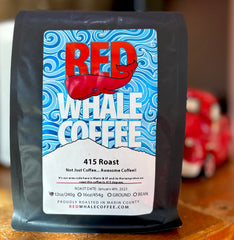Decaf Coffee: Identifying the Decaffeination Processes November 14, 2014
Red Whale Coffee proudly offers two delicious decaf coffees, a Mexican Swiss Water Decaf and a Sumatra Swiss Water Decaf!

http://spanishdialects-09b.wikispaces.com/file/view/coffee_woman.jpg/105800813/coffee_woman.jpg
How is the naturally occurring caffeine extracted from coffee you wonder? You may even ask yourself why some decaf coffees have no flavor while others are tasty? The answer is in the process method used to extract the caffeine from the bean.
All coffee is decaffeinated using water to wash the caffeine from the bean. The end result taste differences come from the process that also extract the oils and flavor complexity compounds from the bean during decaffeination.

http://www.thrillist.com/drink/nation/how-to-make-decaf-coffee
The Different Methods
The Indirect Solvent Based Decaffeination Process is popularly termed the “European Method” and requires boiling green coffee for hours to extract the caffeine. The beans are soaked in chemicals like methylene chloride or ethyl acetate, which bond to the caffeine for easy extraction. The beans are then heated, burning off the chemically bonded caffeine. The process continues by soaking the bean again in the original liquid to recollect the flavor compounds and oils striped from the bean in the first step of the process.
The Direct-Solvent Based Process is often referred to as the Natural Decaffeination Method or the Ethyl Acetate Method. This process starts by steaming the beans rather than boiling them. The bean pores open and are washed for approximately ten hours with Ethyl Acetate, a compound found naturally in fruit. The caffeine adheres to the Ethyl Acetate and is then separated from the bean. The beans are steamed again as the final step in ridding any residual caffeine bonded to the Ethyl Acetate.
The Carbon Dioxide Method (CO2) is often used for commercial grade coffee because large quantities can be processed at a low cost. In this process, a liquid form of CO2 is mixed with water soaked green beans. Unlike the ethyl acetate or methylene chloride, CO2 only bonds with caffeine, leaving the flavor compounds and oils in the coffee. Once the caffeine has been extracted, the CO2 (now laden with caffeine) is pressurized back to a gaseous state, separating the caffeine from the gas which then allows the CO2 to be reused in repeated decaffeination processes.
The Swiss Water Process, the only decaffeination process sourced by Red Whale Coffee, is the only process that does not use chemicals to extract caffeine from the beans. The Swiss Water Decaffeination Process soaks the bean in near boiling water, extracting the caffeine and while leaving the flavor in the coffee. The caffeinated water is then filtered through a charcoal filter that catches the large caffeine molecules and allows the smaller flavor molecules to remain in the water. This process, referred to as the "Green Coffee Extract", allows the water to retain its natural flavors without the caffeine. The final process of returning the flavor to the bean, which is used in all other decaffeination methods, is not needed in this method. The Swiss Water Process is also, the only process recognized as environmentally friendly, sustainable and approved for organic coffee beans.
Familiarizing yourself with the different processes for decaffeination is helpful when choosing your beans. The different processes have varying successes in keeping the robust flavor of the coffee bean without the naturally occurring caffeine.
We invite you to come see us at Red Whale Coffee to try our new Sumatra Swiss Water Decaf! Now that you know the process you can taste the result!
Written by: Caitlyn Prien



